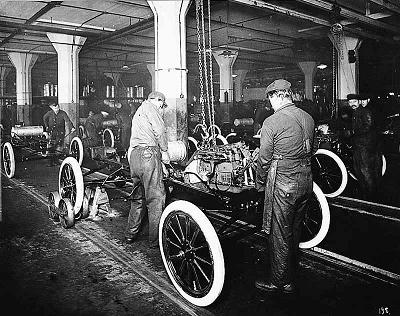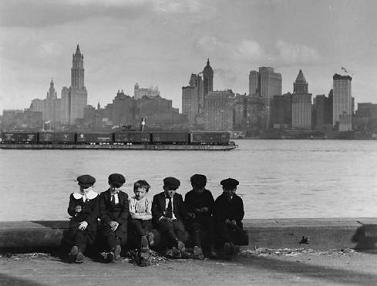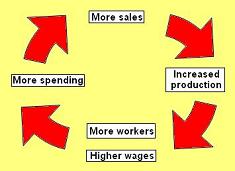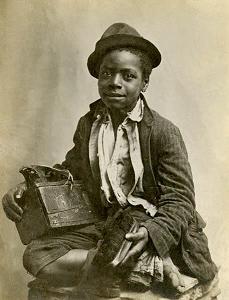|
THIS PAGE HAS BEEN SUPERCEDED
I have left
this page online in case you are following a link to it, but it has been
replaced (2024) by
this page.
How far did the USA achieve prosperity in the 1920s?
|

Angie: For
me, the overriding image of 1920s America is a glossy
automobile, rich young men and fashionable young women relaxing
by a swimming pool, and the legend ‘The Better Buick’.
BBC
Bitesize podcast (2006)
* * * * *
[A 'how far' question ALWAYS indicates that
there are two sides to the argument. So, on the
one hand you can cite evidence of
burgeoning prosperity - on the other hand there is
evidence that there were
many who did not share in the prosperity.]
|
Links
BBC Bitesize
HistoryLearning
1920-30.com - a
brilliant, simple, full account
Model T



YouTube
of Model-T
Powerpoint:
•
Economic Boom ppt.
• ILoveHistory
ppts.
Podcasts:
 - Giles Hill on
the causes of the Boom - Giles Hill on
the causes of the Boom
 - BBC Bitesize: America in
the 1920s, triumph or disaster:
recommended
- BBC Bitesize: America in
the 1920s, triumph or disaster:
recommended
YouTube
Mr
Portman's great video
|
|
Between 1922 and 1929 the annual Gross National
Product of the USA increased by 40%. The average
income per head increased by 27%.
Highlights of the boom included [CI
SUCCESS]:
a. Consumer boom
– growth of personal possessions (c.f. Woolworths, hire purchase, commercial travellers).
b. Innovation in
production methods, especially in the motor industry (by
1925 Ford were producing a car every 10 seconds); this pushed
down prices and made goods more accessible for ordinary people
(the ‘Tin Lizzie’ cost $850 in 1910, only $295 in 1920).

Ford Assembly line
c. Synthetics
– the invention of bakelite (the first plastic), cellophane and
nylon - and chemicals.
d. Upsurge in car
ownership – esp. the Ford Model T; 15 million had been
produced
by 1927, and the
number of Americans owning cars rose from 8 to 23 million.
e. Consumer
durables/electrical
goods – fridges, washing machines, dishwashers, vacuum
cleaners, record players.
f. Communications
revolution – number of telephone doubled/ number of radios
increased from 60,000 to 10 million.
g. Entertainment
industry – Hollywood, Charlie Chaplin, the ‘talkies’ and
cinemas, jazz clubs and speakeasies.
h. Stock market
– Wall Street boomed (a 'bull' market) with many people
buying shares to make a profit.
Many new businesses were 'floated' on the
stock market.
i. Skyscrapers,
highways and urban development.

|
Source A
We are not internationalists, we are American nationalists.
Theodore Roosevelt,
speaking in 1919
Roosevelt was a former President of the US.
Source B
Why Industry boomed
[PAT GOT
CASH]
a.
Population
growing rapidly increased demand for consumer goods.
b.
Abundant
raw materials – esp. coal, iron and oil – allowed cheap
production
c.
Tariffs
– protected American industry from competition
d.
Government
– the government relaxed regulations and reduced taxes (this is
called ‘laissez faire’)
e.
Opportunities
of New Technology (e.g. electrical goods, radio, film,
nylon)
f.
Techniques
of production– Ford’s Assembly line method, and Frederick
Taylor’s time and motion
g.
Cycle
of prosperity – increased prosperity increased prosperity.

h.
Advertising
(e.g. billboards, radio commercials,)
i.
Sales
methods (e.g. commercial travellers, mail order, chain
stores such as Woolworths)
j.
Hire
Purchase
–
instalments allowed people to
buy now, pay later.
Source C
'The business of America is business.'
'The man who builds a factory, builds a
temple. The man who works there, worships there.'
President Coolidge
Source D
We in America today are nearer to the
financial triumph over poverty than ever before in the history of our
land. The poor man is vanishing from us. Under the Republican system,
our industrial output has increased as never before, and our wages have
grown steadily in buying power.
President Hoover, speaking in 1928
During his election campaign,
Republicans promised 'a chicken in every pot and a car in every
backyard'.
|
|
|
|
|
Not every one shared in the prosperity, however,
and there were glaring weaknesses in the American economy in the
1920s.
However, there is plenty of evidence that all was
not well with the American economy in the 1920s, and in 1928 the
'boom' began to slow down.
Particular problems included [FLOP
CUTS]:
a. Farming
- machinery and overproduction led to rapidly falling prices
(wheat prices fell from $183. a bushel in 1920 to 38 cents ain
1929). In 1929 average income in
of farmers was only 40% of
the national average, and many farmers could not afford their
mortgage; in 1924 600,000 farmers went bankrupt.
Note also that rural areas did not have electricity, so most
country-dwellers were excluded from the consumer boom.
b. Low wage
earners
- e.g. unskilled and casual workers, or the 2 million who were
unemployed - could not share in the
prosperity.
There were great inequalities of wealth; the top
5% of the population earned 33% of the income, while 60% of
Americans earned less than $2000, and that 40% were below the
poverty line (notably farmers/ Black Americans/ immigrants).
Only 3% of semi-skilled works owned a car.
c. Old
Industries -
overproduction of coal
(which was being replaced by oil and gas) led to mine closure
and falling wages. In 1929 a coal miners wage was
barely a third of the national average income. There
were also problems in the textiles industry (where 'flapper'
fashions were reducing the amount of cloth used to make
clothes).
d.
Poor Black Americans - 1
million black farm workers lost their jobs in the 1920s. Black
workers in the towns in the north were the lowest paid; the only
work they found available were low-paying, menial jobs. New
York's black Harlem district was a severely overcrowded and
segregated community, with more than 250,000 citizens crammed
into an area 50 blocks long and eight blocks wide. Many of
these people had to sleep in shifts, going to bed when others
went off to work. ‘Rent parties’ were common on Saturday
nights, to raise money to pay the landlord on Sunday.

This photo is from the 1930s, but it sums up the position of
Black people in the 1920s - they can SEE the prosperity, but
they don't SHARE in it.
e. Cartels,
trusts and monopolies - ‘fixed the market’ and tried to keep
prices high and wages low.
f. Unemployment
–
new technology was throwing
more and more people out of work; the number of unemployed stood
at 2 million throughout 1920s.
g. Trade problems
- high tariffs were causing other countries to retaliate, as
well as reducing the purchasing power of those countries, which
made it hard for American companies to export their products
abroad. Farmers, who relied on exporting wheat, were
especially hard-hit by this.
h. Stock Exchange
– the biggest problem; Wall Street was 'over-heating.
So great was
over-confidence
that people were even buying shares in imaginary companies.
Many were buying shares
‘at the margin’ (a person could get a loan of up to 90% to buy
shares) expecting to make enough profit to repay the loan when
the shares were resold - brokers’ loans almost trebled
1926-9. All this threatened disaster if share prices ever
stopped rising.
|
Source E
In the USA too much wealth had
fallen into too few hands, with the result that consumers
were unable to buy all the goods produced. The
trouble came to a head mainly because of the easy credit
policies of the Federal Reserve Board, which favoured the
rich. Its effects were so profound and so
prolonged because the government did not fully understand
what was happening or what to do about it.
John A. Garraty, The
American Nation (1979)
Source F
In 1929 it was strictly a
gambling casino with loaded dice. I saw
shoeshine boys buying 50 000 dollars worth of stock with 500
dollars down payment. A cigar stock at the time
was selling for 114 dollars a share. The market
collapsed. The 114 dollar stock dropped to two
dollars, and the company president jumped out of the window
of his Wall Street office.
Studs Terkel, Hard
Times
Studs was talking to an interviewer in 1970
Source G

A Black bootblack, 1920
What mood is the photographer
trying to create?
Extra:
FLOP CUTS
- can you see any of these problems and weaknesses reflected
in the statements in Sources E, F and G?
|
|
|
|
|